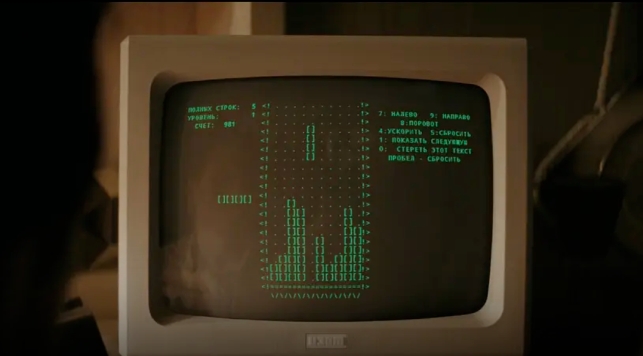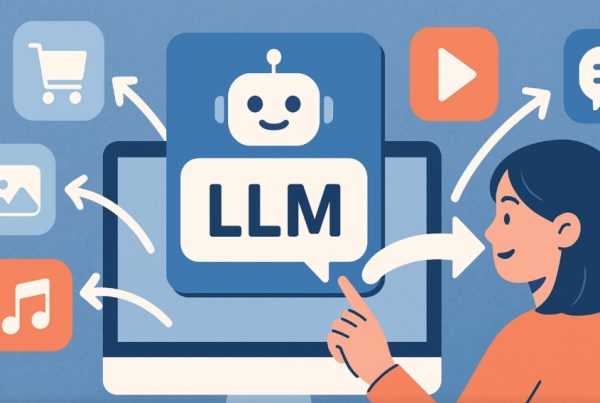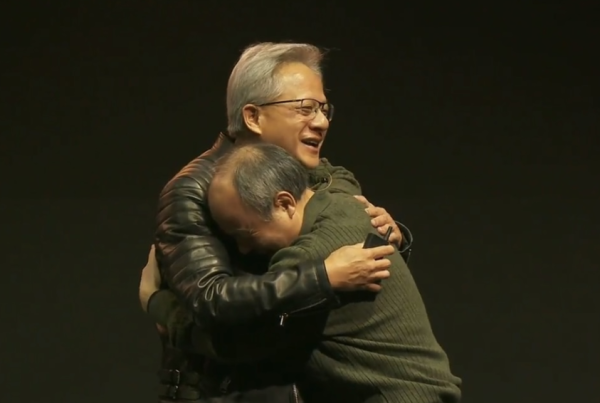Two Big Surgeries to Halt the Worst Transplant Rejection
If you think of ByteDance as a person, then in the past month it has undergone two major surgeries—terminating the largest transplant rejection reaction within its system.
Layoffs in Gaming and VR
On November 27, ByteDance’s gaming division, Chaoxi Guang Nian, carried out sweeping layoffs, retaining only a small core team to manage live projects and explore innovative directions. Earlier in November, nearly half of the employees at ByteDance’s VR business, Pico, were either reassigned or let go.
Both Chaoxi Guang Nian and Pico belong to a type of business that exceeds ByteDance’s traditional experience; they require a “leap of faith” rather than incremental steps. They rely more on human judgment—requiring investments of tens of millions or even over a hundred million before product launch—unlike platforms such as Toutiao and Douyin that adjust products based on post-launch data.
ByteDance once spared no effort to leverage its group advantages in supporting Chaoxi Guang Nian and Pico. In 2021, Chaoxi Guang Nian launched a game that broke into the top three of iOS free games in its first week. Insider sources mentioned that the project received top-tier promotion resources on Douyin—resources exceeding those allocated for the promotion of a major film bought during the Spring Festival season the previous year.
In early 2022, after acquiring Pico, key Douyin veterans were transferred to Pico to handle content. They attempted to transplant Douyin’s short-video and live-streaming content onto the Pico platform—even though few believed VR videos had a future in China. Pico even used a 1-billion-yuan investment from Douyin’s purchase of Qatar World Cup rights for VR broadcasting and produced VR concerts featuring popular stars. Even for typical Douyin video content, additional funds had to be spent since Pico needed to provide creators with specialized 3D cameras for VR video shooting.

A Shift Toward Focus and Pragmatism
At ByteDance’s 11th-anniversary meeting in March 2023, CEO Liang Rubo stressed that innovative businesses like Pico and gaming should be approached with both imagination and calm. However, recent actions suggest that ByteDance’s criteria are increasingly focused on two words: focus and pragmatism.
Amid these business adjustments, ByteDance is concentrating resources on artificial intelligence. An insider revealed that in the past two months, Liang Rubo’s OKRs have emphasized exploring AI and reorganizing the company to align with its AI strategy. Douyin’s leadership is also studying how to integrate AI into the platform.
During the recent round of layoffs at Chaoxi Guang Nian, ByteDance established a new department to develop AI applications, and several employees from various departments have been gradually reassigned there. The outward appearance of major cutbacks may ultimately pave the way for an extraordinary breakthrough. In ByteDance’s 2023 reorganization, both Pico and Chaoxi Guang Nian have been forced to adopt a more focused and pragmatic approach—this guiding principle underpins the recent adjustments in business organization.
Synergy with Core Businesses and New Organization
With the rise of Douyin e-commerce, ByteDance has surpassed Alibaba to become China’s highest advertising revenue company. Yet, there is growing apprehension within ByteDance regarding its information platform business. “In the past one or two years, our leading position hasn’t been obvious; we can’t confidently say we’re outperforming our peers,” stated Liang Rubo at the 2023 all-staff meeting. This isn’t mere over-worry—three years ago, even Alibaba hadn’t expected any challenger to shake its e-commerce dominance.
For innovative businesses, ByteDance increasingly values their synergy with the “core businesses.” In simple terms, success is now measured by whether a business can mutually assist Douyin and Douyin e-commerce—whether through driving traffic, monetization, or sharing resources like manpower and data.
ByteDance’s recent successful new ventures have all been tightly integrated with its core information platforms, such as Douyin or Toutiao. Douyin e-commerce relies entirely on Douyin’s content ecosystem, and products like Fanqie Novel closely mirror Toutiao’s model.
Even TikTok, when it first launched in 2016, heavily relied on shared teams for algorithms, growth, and R&D with Douyin, and its product operations also started with music and dance content. One early TikTok product employee recalled asking Douyin colleagues what they were doing at each stage and then following suit.
Now, with over 1 billion daily active users worldwide on TikTok, the common factor among these successful businesses has been rapid pace driven by traffic and recommendation algorithms. New products receive immediate data feedback, allowing for quick improvements.
In contrast, Pico and gaming are not fast-paced. Pico’s hardware development from concept to shelf takes over a year, and game development can take two to three years or even longer. These sectors demand human judgment rather than data-driven decisions; a single mistaken judgment can cost tens of millions or even over a hundred million.
────────────────────────────────────────────────────────────
ByteDance’s software R&D system does not effectively support game development. Chaoxi Guang Nian’s acquisitions of game teams from Beijing, Shanghai, and Hangzhou and the establishment of self-development studios have not dramatically increased efficiency. Even with a “middle platform” set up in both the division and the studios, the unique tools and processes in game development remain distinct from other Internet companies. As one mid-level manager at Chaoxi Guang Nian explained, their studio’s share of middle platform costs exceeded half—far above the industry average—and “this isn’t driven by market economics.”
Even with a middle platform, project teams still sometimes need to outsource translations or other functions, causing additional costs and inefficiencies.
ByteDance’s middle platform system couldn’t support Chaoxi Guang Nian as expected, nor did Chaoxi Guang Nian offer the hoped-for boost to other businesses. For example, when Chaoxi Guang Nian acquired a company for over $4 billion, one key rationale was to enrich TikTok’s gaming videos and live content with a “Southeast Asian national MOBA.” But in overseas markets, console games dominate, and the impact of that acquisition on TikTok has remained limited.
ByteDance has given its e-commerce and other businesses several years to mature. However, a new business must show sufficient progress, and neither Pico nor Chaoxi Guang Nian—constantly on the periphery of ByteDance’s system—have provided definitive answers. “Toutiao was always fundamentally an AI company,” remarked some, and the recent adjustments mark a rollback of the 2021 reorganization.
Two years ago, following an organizational adjustment, ByteDance established six major business units: Douyin, TikTok, Huoshan Engine, Feishu, Dali Education, and Chaoxi Guang Nian. After this adjustment, ByteDance shifted from a functional organization to a division-based structure where each unit has its own boundaries and independent decision-making, akin to six subsidiaries each run by a CEO.
Among these, aside from Douyin and TikTok—which face different markets with similar products—the other units have completely different business models and independent technical teams. For example, Huoshan Engine is a commercial cloud platform that sells computing power; Pico, under Huoshan Engine, takes two or three years to develop a hardware product before selling it to users and building a content ecosystem for additional revenue; Feishu offers collaborative office software; Dali Education employs tens of thousands of teachers and salespeople; and Chaoxi Guang Nian creates medium to large mobile games aimed at free-to-play models with subsequent in-game purchases.
This organizational transformation signals the end of ByteDance’s startup phase—a phase of decentralizing power to let each business head explore new possibilities. Now, among the six business units, Dali Education and Chaoxi Guang Nian have been almost completely downsized, and Pico retains only a portion of its hardware R&D staff.
ByteDance is now consolidating its resources and energy into operating and commercializing its information platforms—the two areas in which it excels. Huoshan Engine and Feishu were originally built as infrastructure for Douyin. The new exploration is focused on artificial intelligence.
ByteDance has long emphasized that it is an AI company. In 2017, during a face-to-face CEO meeting, when an employee asked the head of algorithm technology about the gap between the company and BAT in AI, the reply was that Toutiao had always been an AI company—not one that makes robotic arms—and that using a combination of machines and humans to enhance content creation, distribution, and discussion was key. At that time, AI was already applied in various ByteDance products such as recommendation systems, content creation, Douyin’s AR effects, content review, advertising systems, automatic cover generation for Toutiao accounts, time album, and Oriental IC’s image screening functions.
Zhang Yiming also believed that the company held significant advantages: “We have practical application scenarios, active users, and long usage times.” An insider recalled that Toutiao regarded its AI Lab as a haven, and that doing these things in today’s era was incredibly exciting—but it certainly needed to speed up.

──────────────────────────────
However, subsequent progress showed that ByteDance did not steadfastly invest along that path. Between 2020 and 2021, its AI Lab underwent massive adjustments, and several senior technical experts, including core head Ma Weiying and director Wang Changhu, left. More importantly, the Lab’s functions shifted towards serving frontline businesses.
After OpenAI released GPT-3 in June 2020, ByteDance trained a generative language model with tens of billions of parameters, primarily using V100 GPUs (the predecessor of A100). Due to its limited scale, the model’s generation capability was average, and ByteDance saw no commercial potential for it at the time—return on investment couldn’t be justified—so the attempt was abandoned.
Three years later, with ChatGPT’s explosive success, Chinese Internet companies collectively began to pay attention to large AI models. An insider revealed that Zhang Yiming actively shared his AI learning experiences with internal colleagues at that time.
After the Spring Festival, as Chinese Internet giants with cloud computing businesses placed massive orders with NVIDIA, ByteDance alone ordered over 1 billion dollars’ worth of GPUs. Previously, internal GPU procurement required detailed justification of ROI, business priority, and importance. Now, with large-model business being a strategic-level new initiative, even if ROI can’t be clearly calculated, the investment is indispensable.
Developing more AI large-model applications appears to be more aligned with ByteDance’s inherent strengths than gaming or VR hardware. It can, like Toutiao or Douyin in earlier days, launch numerous applications to eventually create a breakout hit.
Recently, ByteDance established a new AI department led by TikTok’s product technology head, Zhu Wenjia, focusing on developing large-model applications. An insider mentioned that employees from other departments have already begun transferring there.
After several rounds of cuts, the company’s business is once again concentrating on a single goal and unified methodology—not on multiple independent departments chasing different business models. This giant, with over 100,000 employees and revenue surpassing 550 billion yuan, may be returning to a state where one “brain” can effectively control its direction.
──────────────────────────────







Deciding to invest billions in AI even when ROI is uncertain is a game-changing move.
This strategic consolidation shows ByteDance is not afraid to reinvent itself for future growth.
By reassigning resources into AI, ByteDance is betting on its long-term vision.
The idea of consolidating the company into a more centralized structure is refreshing.
It’s intriguing how core businesses drive every innovation decision at ByteDance.
Cutting off legacy business units might be the catalyst for a revolutionary breakthrough.
The transformation from diversified experimentation to focused execution is impressive.
Leveraging its group strengths once helped, but now focus and pragmatism are the only way forward.
The evolution of ByteDance’s organizational structure highlights the end of its startup phase.
Shifting focus to AI while cutting down on slower-paced ventures shows real strategic courage.
Sweeping layoffs in both gaming and VR indicate a hard reset for non-core businesses.
Imagining ByteDance as a person, these two major surgeries are a bold way to stop internal rejection.